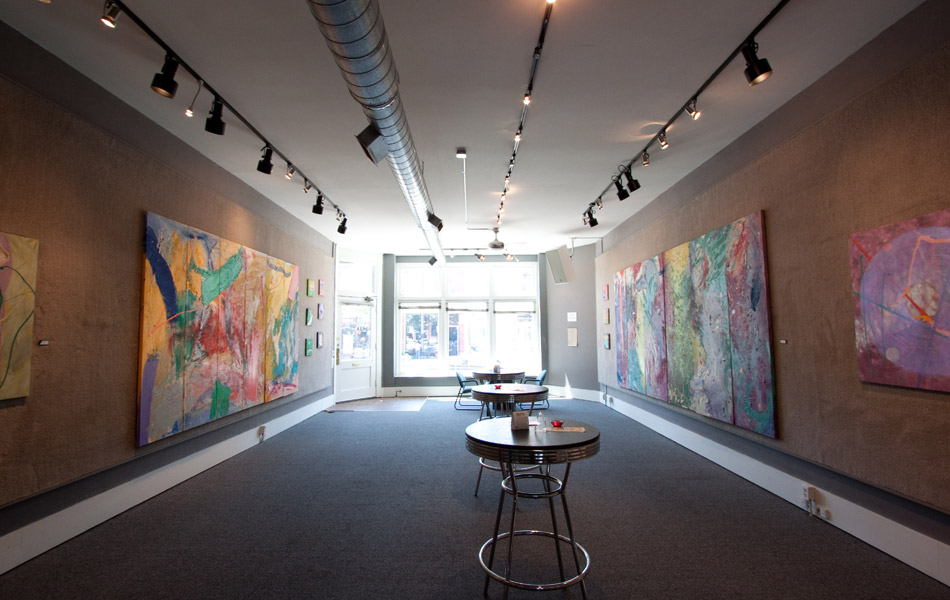All of the art submitted to MICA Gallery must be presented in a complete and professional manner ready to be hung.
- Whenever possible use archival materials in making and presenting your artwork. Common materials such as paper, cardboard and tape contain acid that will cause gradual yellowing, fading and deterioration. By using neutral-PH materials, you can help preserve your art for future generations.
- The finished presentation – front, back, top and bottom – is part of the whole work. It should appear to be new and well crafted, not battered and shop worn or flimsy or fragile. Poor presentation can make great art look terrible.
Paintings, Prints, Drawings and Photographs
- All work must be presented ready-to-hang, preferably with a wire attached to the frame between one-third and one-quarter of the way down the sides of the piece. Stainless steel braided picture wire works best for smooth hanging and deters rusting.
- All two-dimensional work on paper should be matted with neutral tones (white, gray or black only) and covered with clean, scratch-free glass
- A stretched canvas requires no glazing because the canvas needs to breathe. The frame may be backed with a dust cover and/or moisture barrier, but this must be perforated to allow air to circulate.
- Large oils or acrylics on heavy-duty stretchers with a gallery wrap do not need to be framed. The canvas should be stapled on the back and the edge should be painted.
Sculpture, Pottery, Other Three-Dimensional Pieces
- Instructions for special installations should be attached to the piece.
- Quilts and other fabric wall hangings should have a sleeve or other place for curtain rods or similar hardware or otherwise be ready to hang.

